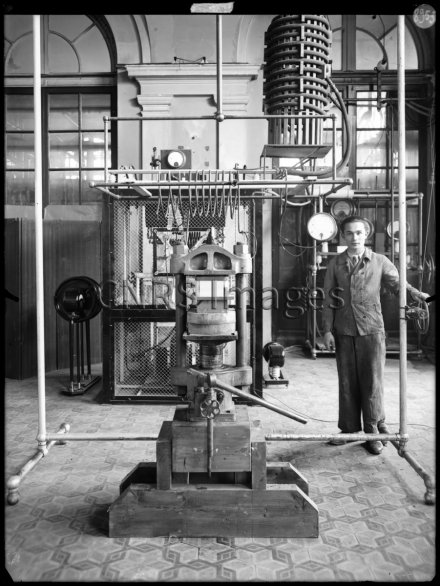Production year
1937

© Fonds historique / CNRS Images
19000001_1023
Presse pour la vulcanisation du caoutchouc, à l'Office national des recherches scientifiques et industrielles et des inventions (ONRSII) à Bellevue, Meudon, le 26 mai 1937. La vulcanisation est un procédé chimique consistant à incorporer un agent vulcanisant (comme le soufre) à un élastomère brut pour le rendre, après la cuisson, moins plastique mais plus élastique. Ce procédé fut découvert par Charles Goodyear en 1839 et industrialisé par l'américain Hiram Hutchinson à Châlette-sur-Loing (Loiret), dès 1853. La vulcanisation était destinée à la fabrication des tissus caoutchoutés, notamment les chaussures et les vêtements imperméables. Aujourd'hui, elle est surtout utilisée dans l'industrie pneumatique.
The use of media visible on the CNRS Images Platform can be granted on request. Any reproduction or representation is forbidden without prior authorization from CNRS Images (except for resources under Creative Commons license).
No modification of an image may be made without the prior consent of CNRS Images.
No use of an image for advertising purposes or distribution to a third party may be made without the prior agreement of CNRS Images.
For more information, please consult our general conditions
1937
Our work is guided by the way scientists question the world around them and we translate their research into images to help people to understand the world better and to awaken their curiosity and wonderment.